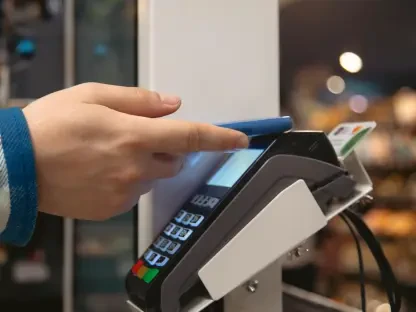Ecommerce businesses are constantly seeking innovative ways to drive growth and enhance customer engagement. In 2025, one of the most effective strategies to achieve these goals is through ecommerce marketing automation. By leveraging automated tools, businesses can streamline marketing tasks, personalize customer interactions, and ultimately increase sales. This article explores various ecommerce marketing automation strategies and tools that can help retailers unlock their full potential.
The Power of Email Automation
Email automation allows businesses to create personalized email campaigns triggered by specific customer actions or behaviors. For instance, an ecommerce business like Apex Apparel, which specializes in outdoor clothing, can send personalized gear recommendations and weather-specific outfitting tips to customers viewing jackets or boots. This approach ensures that customers receive timely and relevant messages, increasing the likelihood of engagement and conversion.
Personalized Email Campaigns
Personalization in email campaigns means more than just addressing the customer by name; it involves tailored content that resonates with each individual’s preferences and behaviors. Apex Apparel, for example, might send custom-fit gear suggestions or articles on how to best prepare for an upcoming hiking trip, based on the customer’s recent browsing history. Such targeted communication makes customers feel valued, leading to higher open rates and engagement. Additionally, automated emails could celebrate customer milestones, like the anniversary of their first purchase, by sending special discounts or exclusive offers, thereby fostering a sense of loyalty and connection with the brand.
Abandoned Cart Recovery
Another powerful application of email automation is abandoned cart recovery. Every ecommerce business faces the challenge of potential lost sales when customers add items to their cart but leave without completing the purchase. Automated abandoned cart emails serve as gentle reminders, nudging customers to return to their shopping journey. These emails can be further enhanced by including incentives such as personalized discount offers, product reviews, or showcasing related items that might spark renewed interest. By addressing potential barriers to purchase, such as offering free shipping or easy returns policies, businesses can effectively reduce cart abandonment rates and recover lost revenue.
Display Ads Retargeting
Display ads retargeting is a strategy that tracks customers who have visited your website and displays your ads on other platforms they visit later, such as Instagram Stories, YouTube, or Google Ads. This keeps your brand visible to potential customers who have shown interest in your products, increasing the likelihood they return to complete a purchase.
Keeping Your Brand Visible
An essential aspect of display ads retargeting is maintaining brand visibility in a crowded digital space. When customers browse products on your website but leave without making a purchase, retargeting ensures they encounter your brand repeatedly during their online activities. For example, a customer who viewed winter jackets on Apex Apparel’s website might be served with ads for similar winter gear while scrolling through Instagram or watching videos on YouTube. This persistent brand presence helps keep the product top-of-mind, increasing the chances of a revisit and purchase. Moreover, retargeting ads can be dynamically adjusted to reflect the customer’s journey, showing the specific products they viewed, enhancing relevance, and driving better ad performance.
Enhancing Ad Relevance
The success of retargeting campaigns largely depends on the relevance of the ads shown to potential customers. By leveraging comprehensive data analytics, businesses can craft highly personalized ads that align with the customer’s interests and behaviors. For instance, if a customer previously searched for waterproof coats, the retargeting ads could focus on showcasing the best-selling waterproof options available. This level of precision in ad targeting not only increases the likelihood of conversions but also improves the overall customer experience by providing them with content that truly matters to them. Advanced algorithms and AI tools can further refine these ad campaigns, adapting in real-time to user behavior and preferences to maximize engagement and ROI.
SMS Marketing
SMS marketing involves sending text messages directly to customers’ mobile phones. This strategy requires ecommerce marketing automation software capable of managing and sending bulk SMS messages. Apex Apparel could use SMS marketing to alert customers about flash sales on rain gear during the rainy season or send tips for maintaining outdoor gear after a purchase. The immediacy and directness of SMS make it a powerful tool for driving customer engagement.
Direct Customer Communication
The immediacy of SMS messages makes them an effective tool for urgent or time-sensitive communications. For example, businesses can use SMS marketing to announce flash sales or limited-time offers, ensuring that loyal customers are the first to know about these opportunities. Given the high open rates of SMS messages compared to emails, this method guarantees that customers receive and read the message promptly. Apex Apparel might leverage this by sending notifications about upcoming sales on rain gear when the forecast predicts heavy rain, providing value to the customer precisely when they need it. Moreover, SMS can be utilized for post-purchase interactions, such as sending order confirmations, shipping updates, and soliciting feedback through surveys, enriching the overall customer experience.
Building Customer Loyalty
SMS marketing can also play a pivotal role in nurturing customer relationships and fostering loyalty. Sending personalized messages, such as birthday wishes accompanied by a special discount or exclusive access to new product launches, makes customers feel appreciated and valued. Loyalty programs can be enhanced by integrating SMS communications, delivering timely reminders about reward points or exclusive member-only sales. By consistently engaging customers with relevant and valuable content through SMS, businesses can strengthen their relationship with the audience, encouraging repeat purchases and long-term loyalty. This direct line of communication ensures that customers feel connected with the brand, even when they’re on the go.
Customer Segmentation and Personalization
Customer segmentation and personalization involve using detailed customer data analysis to divide your audience into specific segments based on purchasing behavior, preferences, and historical interactions. By identifying unique customer profiles and patterns, businesses can tailor marketing campaigns to address each group’s distinct needs and interests.
Detailed Customer Data Analysis
Detailed customer data analysis is the backbone of effective segmentation and personalization. Utilizing sophisticated data collection and analytics tools, businesses can gather insights into customers’ purchasing behaviors, preferences, and engagement patterns. For example, Apex Apparel might analyze data points such as frequency of purchases, average order value, and preferred product categories to create distinct customer segments. This granular understanding of customer behavior allows businesses to craft highly targeted marketing campaigns that resonate with each segment. Personalized product recommendations, tailored email content, and exclusive offers can be designed based on the specific interests and habits of different customer groups, enhancing the relevance and effectiveness of marketing efforts.
Enhancing Customer Experience
Personalized marketing campaigns can significantly enhance the customer experience by delivering relevant and timely content. When customers feel understood and valued, they are more likely to engage with the brand and make repeat purchases. This level of personalization can also lead to higher customer satisfaction and loyalty.
Chatbot and AI Integration
Integrating chatbots and AI into customer service processes can enhance the customer experience by providing quick, automated responses to inquiries. These tools can assist with various customer queries and sales support, from giving product recommendations to tracking orders. Apex Apparel could embed a chatbot on its site to help customers choose the right outerwear for specific outdoor conditions or activities, thus improving the shopping experience with tailored assistance.
Improving Customer Service
One of the most immediate benefits of implementing chatbots and AI in customer service is the ability to deliver prompt and accurate responses to customer inquiries. Chatbots can handle a wide range of questions, from general queries about product availability to specific issues such as order statuses or return policies. For instance, an outdoor clothing retailer like Apex Apparel might use a chatbot to help customers determine the best gear for a hiking trip based on weather conditions. This instant assistance not only enhances the shopping experience but also reduces the burden on human customer service agents, allowing them to focus on more complex and personalized customer needs. By ensuring that customers receive quick and relevant support, businesses can improve overall satisfaction and foster long-term loyalty.
Streamlining Operations
Chatbots and AI do more than just enhance customer service—they also streamline operations and improve efficiency. Routine tasks, such as answering frequently asked questions or handling basic customer interactions, can be managed by automated systems, freeing up time and resources for human agents to address more pressing and nuanced issues. AI tools can also assist in tracking and analyzing customer interactions, providing valuable insights into customer behavior and preferences. This data can then be used to further refine and optimize marketing strategies, leading to more effective and targeted campaigns. Overall, chatbot and AI integration not only boosts operational efficiency but also contributes to a more seamless and enjoyable customer journey.
Popular Ecommerce Marketing Automation Tools
In the world of ecommerce, the choice of marketing automation tools can significantly impact a business’s ability to grow and engage with its customers. These tools offer a variety of features designed to streamline processes, personalize customer interactions, and ultimately boost sales. Below are some of the most popular ecommerce marketing automation tools available in 2024.
Shopify Automations
Shopify Automations allows users to automate various operational tasks within their ecommerce store using a user-friendly visual workflow builder. Key features include easy-to-use templates, campaign customization, and checkout personalization. The cost depends on your Shopify plan and pricing.
Klaviyo
Klaviyo is a comprehensive marketing automation platform designed for data-driven growth. It centralizes data from multiple sources to create a complete customer view and automates workflows across multiple marketing channels, including social media platforms and emails. Key features include data-driven personalization, AI-enhanced automation, and performance measurement. The free plan is for up to 250 contacts, with pricing varying based on email and SMS contacts.
HubSpot
Ecommerce businesses are always on the lookout for new ways to boost growth and improve customer engagement. In 2024, one of the most powerful methods for achieving these objectives is through ecommerce marketing automation. This approach uses automated tools to streamline marketing tasks, customize customer interactions, and ultimately drive higher sales. By automating repetitive tasks like email marketing, social media posting, and customer follow-ups, businesses save time and ensure consistency in their marketing efforts.
Marketing automation also allows for greater personalization, which is key to engaging today’s consumers. Through data collection and analysis, these tools can tailor messages and offers to individual customer preferences and behaviors. This personalization can lead to increased customer loyalty and higher conversion rates.
Additionally, marketing automation tools can help in segmenting customers more effectively. By analyzing customer data, businesses can create targeted campaigns that resonate with specific segments, leading to more meaningful interactions and improved sales figures.
Overall, ecommerce marketing automation offers immense potential for businesses looking to maximize their reach and effectiveness. This article delves into various strategies and tools that can help retailers harness the power of automation to unlock their full potential and stay ahead in a competitive market.









